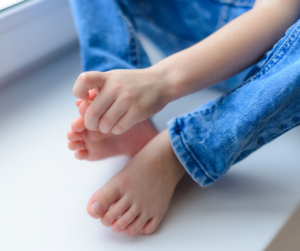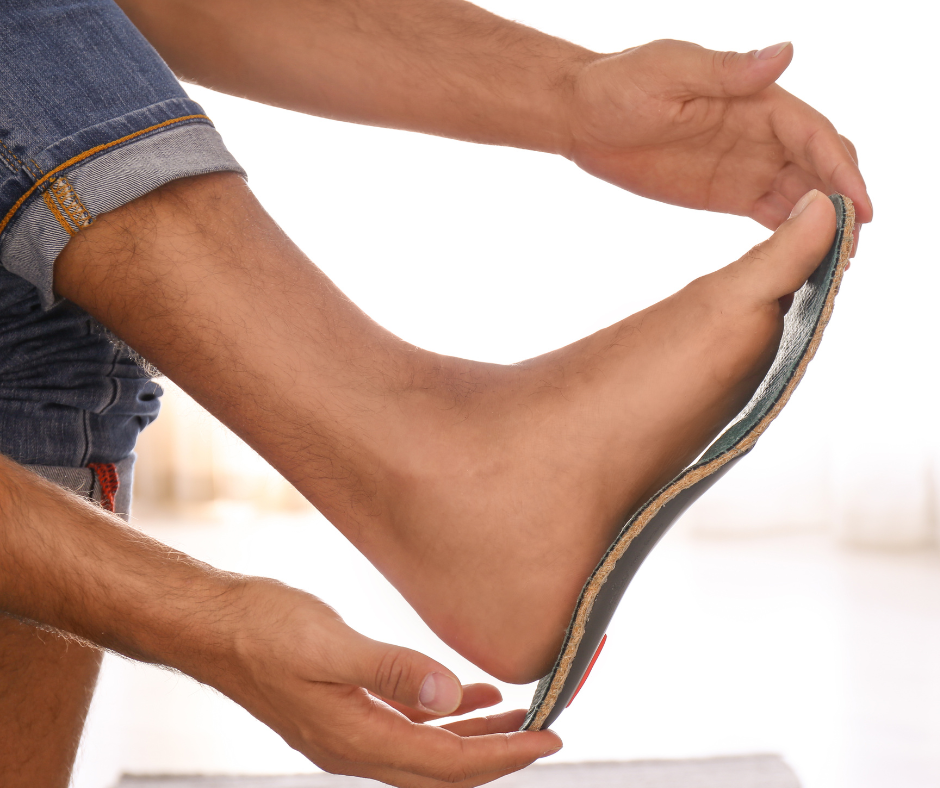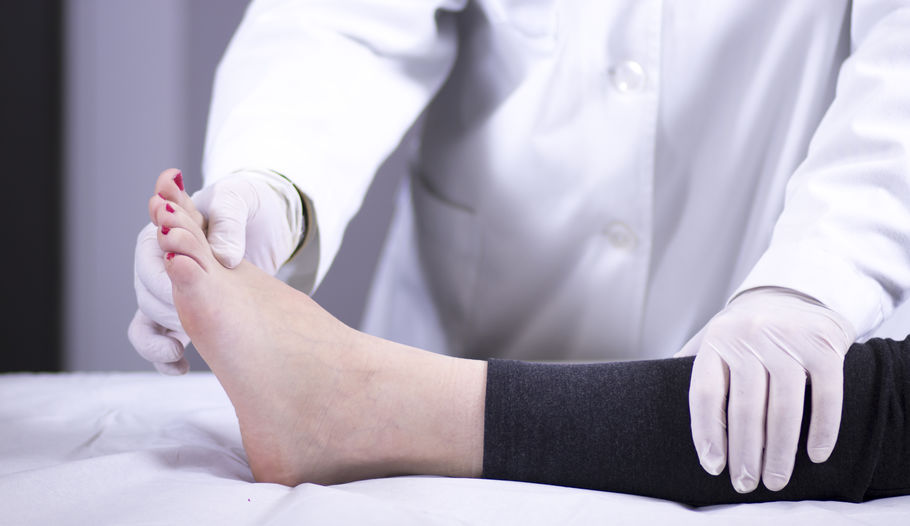-
5 Common Foot and Ankle Injury Myths in Sports

From little league to professional sports, foot and ankle injuries are some of the most common among athletes. And unfortunately, many misconceptions and myths surround these issues, which can hinder recovery.
In this post, we will debunk these myths to help athletes better address their foot and ankle troubles.
Myth 1: All Ankle Sprains Are the Same.
Fact: Ankle sprains vary in severity, ranging from mild to severe. While most ankle sprains involve the ligaments on the outside of the ankle, some can also affect the ligaments on the inside. That’s why you should seek a medical evaluation to determine the extent of the injury.
Myth 2: You’re Right, Coach. I’ll Rub Some Dirt on It.
Fact: Continuing to play with pain can worsen an injury and delay recovery. If you experience pain in your foot or ankle, it’s important to rest and seek medical attention. Overuse injuries and stress fractures are common for athletes who are too stubborn to stop.
Myth 3: Rest Or Surgery. There’s No In Between.
Fact: While rest is often recommended for minor injuries and surgery is sometimes required for season-ending injuries, there lies a full spectrum of intervention between these two extremes:
- Physical therapy: Exercises to strengthen the surrounding muscles and improve stability.
- Corticosteroid injections: These injections can help reduce inflammation and pain in the affected joint.
- Anti-inflammatory medications: Over-the-counter or prescription medications can help alleviate pain and reduce inflammation.
- Orthotics: Custom orthotics may be necessary to address underlying foot mechanics.
Myth 4: All Foot Pain is Caused by Plantar Fasciitis.
Fact: While plantar fasciitis is a common cause of foot pain in athletes, it’s not the only possibility. Other conditions, such as Achilles tendonitis, turf toe, neuromas, and others listed above, can cause pain and limit performance.
Myth 5: Once an Injury Heals, You’re Good to Go.
Fact: Even after an injury heals, it’s important to continue rehabilitation exercises to prevent re-injury. Strengthening the surrounding muscles and improving flexibility can help enhance stability and reduce the risk of recurrence.
Want to start taking your foot and ankle health seriously? We’re happy to help! Schedule a comprehensive foot examination with Kentlands Foot and Ankle Center podiatrist Dr. Jon M. Sherman. To book your appointment, please call our office at 301-825-9697.
-
Don’t Lose Your Mojo: Signs, Symptoms, and Treatments for Broken Toe

If you’ve ever dropped something on your foot or jammed it on something hard, you might have been close to breaking your toe. Broken toes are one of the most common breaks in the human body, and they can be seriously painful injuries that require prompt and careful rehabilitation.
That’s why at Kentlands Foot and Ankle Center, we are here to un-stub the toe fracture confusion, providing expert insight and advice along your path to better foot health.
Signs and Symptoms of a Broken Toe
Because a broken toe often causes immediate and severe pain, it’s helpful to distinguish it from other potential foot injuries like turf toe and toe sprains:
- Intense pain: Sharp and localized pain at the point of impact.
- Swelling: Rapid onset of swelling around the injured toe.
- Bruising: Discoloration may appear within a few hours.
- Deformity: The toe may appear visibly crooked or misshapen.
- Difficulty walking: Putting weight on the injured foot may be painful.
Prognosis for a Broken Toe
Most toe fractures typically heal within 4-6 weeks. However, the specific recovery time can vary depending on the severity of the fracture and the person’s overall foot health.
While most broken toes heal without complications, there is a small risk of developing arthritis in the affected toe in the future. Additionally, if the fracture is not properly aligned, it may result in long-term pain or deformity.
Treatment and Recovery
Most minor toe fractures can be treated at home with the RICE method (rest, ice, compression, elevation) and over-the-counter pain relievers prescribed by your podiatrist. In some cases, your podiatrist may recommend taping or splinting the toe to immobilize it and promote healing.
Crutches or boots are typically not necessary for a broken toe unless there are multiple fractures or associated injuries. However, it’s essential during recovery to avoid putting excessive weight on the injured foot. Physical therapy may also be recommended to gently regain strength and flexibility after the bone has healed.
Want to stay on top of your foot and ankle health this summer? We’re happy to help! Schedule a comprehensive foot examination with Kentlands Foot and Ankle Center podiatrist Dr. Jon M. Sherman. To schedule your appointment, please call our office at 301-825-9697.
-
Protect Your Feet from the Summer Sun

Just like the rest of your body, your feet are susceptible to sun damage. UV rays penetrate the layers of your skin, causing sunburn, premature aging, and increasing the risk of cancer. While the soles of your feet have thicker skin, the tops and ankles are vulnerable, especially for people who wear sandals or flip-flops regularly.
If we diligently protect our faces and arms with sunscreen, why should we neglect our feet? Here’s why you shouldn’t forget about protecting them from the sun’s harmful UV rays, according to our expert team at Kentlands Foot and Ankle Center.
The Risks of Sun-Exposed Feet
- Actinic Keratosis: These precancerous lesions appear as rough, scaly patches on skin exposed to the sun, especially during summer. While not cancerous themselves, they can develop into skin cancer if left untreated.
- Squamous Cell Carcinoma: This is a type of skin cancer that can develop on the sensitive areas of the feet. Early detection can decrease the risk of complications, so be aware of any changes in the appearance of your skin, such as new moles, persistent scaling, or bleeding.
- Age spots: These are flat, brown spots that commonly appear on sun-exposed areas, including the tops of the feet. While benign, they can be a cosmetic concern for some.
- Pre-existing skin conditions: Sun exposure can worsen existing skin conditions on the feet, such as eczema or psoriasis, leading to increased itching, inflammation, and discomfort.
Protecting Your Feet This Summer
- Sunscreen: Apply broad-spectrum sunscreen with SPF 30 or higher to the tops of your feet and ankles 15 minutes before sun exposure. Reapply every two hours, especially after swimming or sweating.
- Sun-Protective Footwear: Wear closed-toe shoes or sandals with straps that cover the tops of your feet. Look for materials like canvas or mesh that allow for ventilation while providing some sun protection.
- Examine Your Feet Regularly: Pay attention to any changes in the appearance of your skin, such as new moles, discolored spots, or changes in texture. If you notice anything concerning, consult a podiatrist.
Want to keep your feet happy and healthy this summer? We’re eager to help! Schedule a comprehensive foot examination with Kentlands Foot and Ankle Center podiatrist Dr. Jon M. Sherman. To schedule your appointment, please contact our office at 301-825-9697.
-
For Foot and Ankle Pain, Tailored Treatments Offer the Best of Both Worlds

Foot pain can sideline even the most active individuals, but before you resign yourself to chronic discomfort, consider the wide variety of treatments available from your local podiatrist. With options ranging from the conservative to the innovative and everything in between, a DPM can restore balance and mobility while managing pain.
The key is finding the right approach for your specific needs! For this blog, the team at Kentland’s Foot and Ankle Center wants to keep you posted on a few of the most effective ones. Read on to learn more about the options available to you, from exciting newbies to tried-and-true standards.
Starting Simple: Rest, Therapy, and Orthotics
The first line of defense is often the simplest.
- Rest, ice, and pain medication might provide relief in the short term.
- Physical therapy strengthens supporting muscles and improves flexibility, addressing the root cause of pain and preventing future problems.
- Custom orthotics deserve special mention. By providing personalized support and correcting biomechanical imbalances, they can significantly improve comfort and function.
You can get the best of both worlds via a combined approach: A 2023 study published in the Journal of the American Podiatric Medical Association (JAPMA) found that physical therapy combined with custom orthotics was highly effective in reducing pain and improving function in patients with plantar fasciitis.
- High-tech and low-tech can also complement one another. For example, our team utilizes 3D orthotic scanning technology to create orthotics tailored to your unique foot shape.
- This ensures a superior fit and function compared to traditional casting methods.
Stepping Up: Advanced Techniques for Persistent Pain
If conservative measures don’t provide lasting relief, your podiatrist might recommend more advanced interventions.
- Shockwave therapy, for instance, utilizes sound waves to stimulate tissue healing and reduce inflammation.
- Studies have shown promise for its effectiveness in treating plantar fasciitis and Achilles tendonitis.
Sometimes, a minimally invasive surgical procedure might be the best approach.
- Many podiatrists are skilled surgeons, able to perform procedures like bunionectomy or hammertoe correction with minimal scarring and downtime involved.
Are you interested in learning more? We’re always happy to help! Schedule a comprehensive foot examination with Kentlands Foot and Ankle Center podiatrist Dr. Jon M. Sherman. To make your appointment, please call our office at 301-330-5666.
-
5 Ways Physical Therapy Makes For Fitter Feet!
Kentlands Foot & Ankle Center understands the value of conservative treatments and natural remedies; in fact, Dr. Sherman was featured in Business Insider a few months ago discussing just that! It should come as no surprise, then, that our team places such a high value on the power of physical therapy, which can make a difference for a wide range of lower extremity ailments.
This blog will cover five different conditions and circumstances that PT alleviates, improves, or even prevents. Let’s kick things off!
- Plantar Fasciitis:
This prevalent problem inflicts heel pain due to inflammation of the plantar fascia, the tissue connecting your heel to your toes. Physical therapists can design personalized plantar fasciitis stretches with a custom program that improves flexibility, reduces pain, and prevents future flare-ups.
- Ankle Sprains:
Rolled ankles are frequent, painful injuries, stretching or tearing the ligaments that stabilize your joints. Physical therapy can provide an ankle sprain recovery regimen and ankle strengthening exercises to help you regain range of motion, strengthen supporting muscles, and improve proprioception (your body’s awareness of joint position). This, in turn, will reduce pain, swelling, and the risk of future sprains.
- Achilles Tendinitis:
Overuse can inflame the Achilles tendon, causing pain in the back of your heel. Physical therapy focuses on reducing inflammation, improving flexibility, and strengthening the calf muscles to better support the tendon.
- Arthritis:
Both osteoarthritis and rheumatoid arthritis can affect the foot and ankle joints, leading to pain, stiffness, and reduced mobility. Physical therapists can create an exercise program to maintain joint mobility, strengthening surrounding muscles while improving balance. This helps manage pain, maintain function, and potentially delay the need for surgery.
- Post-Surgical Recovery:
After foot or ankle surgery, physical therapy is crucial for regaining strength, flexibility, and range of motion. A personalized program helps restore proper gait mechanics and function, ensuring a smooth and successful recovery.
As you can see, physical therapy can do all kinds of good for your feet and ankles, healing them when they’re hurt and maintaining them when they’re fit.
Interested in learning more? We’re always available and happy to help! Schedule a comprehensive foot examination with Kentlands Foot and Ankle Center podiatrist Dr. Jon M. Sherman. To make your appointment, please call our office at 301-330-5666.
-
Keep Your Feet Flowing: Blood Flow and Circulation in the Lower Extremities

February is American Heart Month, a timely reminder to prioritize our cardiovascular well-being. However, while most focus remains on the heart itself, its connection to our feet and lower extremities tends to go unnoticed.
The truth is that healthy blood flow and circulation are crucial for happy, healthy feet. Let the team at Kentlands Foot & Ankle Center delve into this vital relationship for you! Together, we’ll explore how to keep your feet flowing freely.
Heart Health Basics
Your heart pumps tirelessly and constantly, sending oxygen-rich blood throughout your body. But that doesn’t mean there aren’t any problems.
- In terms of distance, your heart works hardest to send blood to your feet, which are as far away from it as possible.
- When this intricate system functions well, your feet receive the nutrients they need to stay healthy and function optimally.
- When something goes amiss, your feet are typically the first to find out.
When the Flow Filters
Disruptions to your circulation tend to translate into problems for your feet.
- Conditions like peripheral artery disease (PAD) – which affects nearly 34 million Americans – narrow arteries, restricting blood flow to the lower extremities.
- This can lead to symptoms such as pain, numbness, and even tissue damage in severe cases.
Circulation Education
Fortunately, several measures can promote healthy blood flow and circulation in your feet:
- Regular exercise, including walking, improves circulation throughout your body, including your lower extremities.
- Avoid tight shoes that constrict blood vessels in your feet.
- If you have diabetes or high blood pressure, work with your doctor to manage these conditions effectively.
- Consult a podiatrist promptly for any concerns like pain, numbness, or changes in skin color or texture.
When in doubt, it never hurts to consult a DPM with a proven reputation for knowing how to handle all kinds of foot and ankle complications!
Schedule a comprehensive foot examination with Kentlands Foot and Ankle Center podiatrist Dr. Jon M. Sherman. To make your appointment, please call our office at 301-330-5666.
-
An Ounce of Prevention is Worth a Pound of Cure with Diabetes

When it comes to the diabetes epidemic, podiatrists are on the front lines. That’s why an expert DPM knows better than most that diabetes can seriously harm your feet. Recent statistics paint a troubling picture: The CDC asserts that nearly 39 million people, or 11.6 percent of the US population, currently have diabetes, with almost 9 million of those as yet undiagnosed. Millions more are pre-diabetic, and that number only becomes grimmer as people age.
Individuals with diabetes are at a higher risk of developing foot complications like neuropathy, poor circulation, and foot ulcers. From there, problems can get even worse. That’s why podiatric care is essential for anyone managing this disease. Check out a few of the helpful tips below, courtesy of Kentlands Foot & Ankle Center.
If you’re a diabetic, see a podiatrist regularly!
- Everyone with diabetes should have an annual exam, no matter what. But for some patients, even more visits will be required.
- Medicare will permit most people to schedule an appointment every two months to care for their nails and calluses. Take advantage of that, and try to stay consistent with your efforts.
Check your feet twice a day!
- Look for the unusual – cuts, redness, anything.
- If you see something, contact us right away.
- Don’t try to handle the problem yourself; you might risk infection or further complications.
DON’T GO BAREFOOT!
- As a diabetic, you always want to protect your feet.
- Wound healing is a dangerous issue, and even minor cuts can harm you more than you think.
- Wear shoes at all times!
Don’t let your diabetic foot care problems get out of hand. It’s important to take action right away if you notice anything amiss. We encourage residents of Montgomery County to consult Dr. Sherman sooner rather than later for a complete examination and assessment of diabetic foot health complications. Call 301-330-5666. or contact us online for an appointment at our Gaithersburg podiatry office. We look forward to getting you back on your feet and keeping you there!
-
What Is a Podiatrist?

Around the world, podiatrists pursue the advancement of the Podiatry field for everyone’s benefit, and, to better serve those who suffer from ankle and foot conditions. Your feet are vital to your everyday life. They permit you to walk 150,000 miles in your lifetime, which is equal to walking around the world six times! Foot issues can be debilitating; therefore, it is important to take care of your feet.
People may wonder why there is a branch of medicine that deals strictly with feet. It’s because foot problems are very common. A few of the most common issues people have with their feet include:
- Bunions
- Athlete’s foot
- Ingrown toenails
- Diabetic neuropathy
- Plantar fasciitis
- Corns
- Heel spurs
- Blisters
Education and Awareness
Our team of experts at Kentlands Foot and Ankle Center strive to elevate awareness about the importance of proper foot health. That is one of the reasons we wanted our patients to be able to access reliable and accessible information that pertains to the lower extremities. If you would like to get involved, you can help spread the word about podiatry and important foot health tips! When you’ve learned more about proper foot health, you can begin spreading the word and educating others. Start here:
- Read up on health conditions related to the feet, including information on keeping your feet healthy.
- Proper daily foot care involves activities like caring for your toenails and wearing the right shoes.
- Learn to maintain good foot health
- Have an in-person conversation or by using social media to discuss podiatry and foot health.
When To See a Podiatrist
Anytime you experience foot or ankle discomfort, changes in the appearance of your feet, abnormal growth(s), or have an underlying medical condition that affects your feet or ability to function. Symptoms are not always obvious and may even continue unnoticed. If you or anyone you know is experiencing one or more symptoms, it is time to see a podiatrist.
Schedule An Appointment
If you are experiencing chronic foot pain or discomfort in your lower extremities, call our Montgomery office at 301-330-5666 and schedule an appointment with our board-certified podiatrist Dr. Jon M. Sherman or visit our website for more information.
RECENT POSTS
categories
- Uncategorized
- Featured Articles
- Foot Disorders
- Broken Ankle
- Broken Toe
- Fracture
- Foot Health
- Foot Care
- Arthritis
- Foot Pain
- Skin Cancer
- Podiatry Appointment
- Custom Orthotics
- Podiatrist
- Diabetes
- Gout
- Heart Health
- National Nutrition Month
- National Foot Health Awareness Month
- Foot Safety
- Foot and Ankle Injuries
- Falls Prevention
- Chronic Heel Pain
- Shoes
- Laser Therapy
- Quoted
- Physical Therapy
- KeryFlex
- Sweat
- Summer Foot Care
- Sports Injury
- ESWT
- Fungal Toenails
- Bunion
- Plantar Fasciitis
- PinPointe Laser



